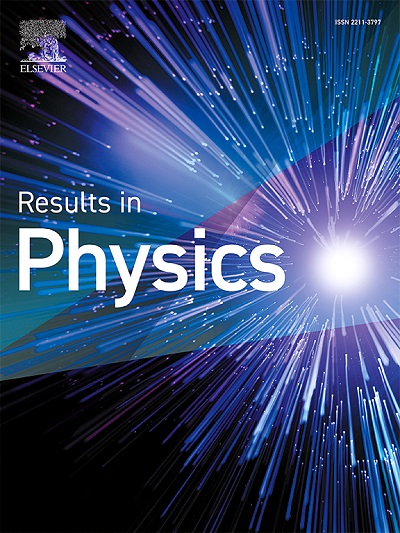用于感知有毒气体的双层过渡金属二粲化物上的气体吸附第一性原理研究
IF 4.4
2区 物理与天体物理
Q2 MATERIALS SCIENCE, MULTIDISCIPLINARY
引用次数: 0
摘要
本文章由计算机程序翻译,如有差异,请以英文原文为准。
First-principles investigation of gas adsorption on bilayer transition metal dichalcogenides for sensing toxic gases
Transition metal dichalcogenides (TMDs) have shown significant promise in gas sensing applications due to their high catalytic activity and unique electronic properties, which facilitate effective interactions with various gas molecules. This makes them ideal candidates for high-performance gas sensors. In this study, we investigated the sensing properties of nitrogen-containing gases (NCGs) on several heterostructures—namely, MoS2/WTe2, MoTe2/WS2, MoS2/TiO2 and MoS2/IrO2—using density functional theory calculations. The results indicate that NH3 and NOX exhibit weak electronic interactions with MoS2/WTe2 and MoTe2/WS2 heterostructures, while strong electronic interactions are observed with MoS2/TiO2 and MoS2/IrO2 heterostructures. Electron transport properties were further assessed using Non-Equilibrium Green’s Function calculations, revealing promising gas sensing characteristics for NH3 detection across all heterostructures and particularly effective NOX detection with MoS2/WTe2 and MoTe2/WS2 heterostructures. These findings highlight the potential of MoS2/WTe2 and MoTe2/WS2 as sensitive and selective gas sensors for both NH3 and NOX, providing valuable insights for developing advanced gas-sensing technologies with diverse practical applications.
求助全文
通过发布文献求助,成功后即可免费获取论文全文。
去求助
来源期刊

Results in Physics
MATERIALS SCIENCE, MULTIDISCIPLINARYPHYSIC-PHYSICS, MULTIDISCIPLINARY
CiteScore
8.70
自引率
9.40%
发文量
754
审稿时长
50 days
期刊介绍:
Results in Physics is an open access journal offering authors the opportunity to publish in all fundamental and interdisciplinary areas of physics, materials science, and applied physics. Papers of a theoretical, computational, and experimental nature are all welcome. Results in Physics accepts papers that are scientifically sound, technically correct and provide valuable new knowledge to the physics community. Topics such as three-dimensional flow and magnetohydrodynamics are not within the scope of Results in Physics.
Results in Physics welcomes three types of papers:
1. Full research papers
2. Microarticles: very short papers, no longer than two pages. They may consist of a single, but well-described piece of information, such as:
- Data and/or a plot plus a description
- Description of a new method or instrumentation
- Negative results
- Concept or design study
3. Letters to the Editor: Letters discussing a recent article published in Results in Physics are welcome. These are objective, constructive, or educational critiques of papers published in Results in Physics. Accepted letters will be sent to the author of the original paper for a response. Each letter and response is published together. Letters should be received within 8 weeks of the article''s publication. They should not exceed 750 words of text and 10 references.
 求助内容:
求助内容: 应助结果提醒方式:
应助结果提醒方式:


